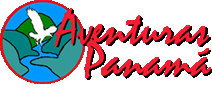Whitewater Rapid Classification
Bow- The front of the boat
Carabiner- A clip, used to secure items into the boat, and to construct safety and rescue systems
Current- Moving water
Dry Bag- A bag for keeping gear in on the river, to help keep things dry (but probably not 100%)
Duckie- A one or two person inflatable boat, usually paddled with double bladed paddles
Eddie Line- Where the water flowing upstream passes the water flowing downstream.
Eddie- Water flowing upstream behind a rock or other obstacle. Eddies often provide a safe place to get out of the current
Ferry- To cross a current or river, without moving downstream
Flip- The boat turned upside down by a wave, a rock, or other mishap
Flow- The amount of water passing a point in the river, measured in CFS
Gradient- The "steepness" of a river, measured in feet of elevation loss per mile of river
Guide- The person who steers the boat down the river, giving paddle commands to the crew (paddle captain), or rowing (oar captain).
Haystack- A wave in a river formed by obstacles on the river bottom, where the wave stands still relative to the bank.
High Water- River flow above an expected average. Makes the currents faster. Some rapids get easier, others become more difficult
High Side- The necessary act of jumping to the "high side" when coming up against an obstacle sideways. Always jump downstream, towards the rock or obstacle. When executed properly, it can help prevent a wrap or a flip.
Hole- Where water flowing over a rock or other obstacle flows down, then back onto itself in an eruption of whitewater
Hoopi- Tubular webbing used for multiple purposes in rigging and preparing boats
Hydraulic- see Hole
Inflatable Kayak- see Duckie
Laterals- A wave or hole peeling off an obstacle at an angle.
Life Jacket- PFD, A personal floatation device, coast guard approved, and worn like a vest
Low Water- Flows below an expected average. More rocks and obstacles may show, rapids become more technical
Oar- A long blade, attached to the boat by an oarlock on thole pin, and used to row
Oar Rig- A boat rigged with oars, so one person sitting in the center of the boat can row
Paddle- A paddle held in the hands, not attached to the boat, used to paddle. Can be single-bladed (for rafting and canoeing) or double-bladed (for kayaking, solo cats, inflatable kayaks)
Paddle Assist- see Stern Rig
Paddle Boat- A raft with a crew of paddlers and a guide
Paddle Commands - Instructions used by the guide to communicate to the crew. Some more commonly used commands are: Forward paddle, Back paddle, Left Turn or Left Back, Right Turn or Right Back, and Stop.
Pool-Drop- A type of river in which rapids are separated by calmer pools of water, sometimes more forgiving than continuous gradient rivers
Portage- To carry the boats around a rapid, necessary around Class VI rapids and other obstacles.
Put-In- River access where a trip begins
Rapid- Where there's whitewater! Water flowing through a shallower, constricted, or steeper section forms a rapid
River Left- The left side of the river when facing downstream
River Rating- A measure of the difficulty of a rapid or a river
River Rat- It could be a rodent; but, in our case it applies to persons that live for the river and on the river.
River Right- The right side of the river when facing downstream
Run- A section of river that can be boated
Safety Talk- A talk which precedes every trip, in which paddlers learn about safety on the river.
Scout- To stop and look at a rapid before running it.
Setting Safety- Catching an eddie, or hiking down the river, past a rapid to be there for the safety of a boat about to come through the rapid.
Standing Wave- see Haystack
Stern Rig- An oar/paddle boat, in which the guide has oars and frame in the stern, and thecrew, sitting forward, has paddles. Ofen used on high water
Stern- The rear of the boat
Strainer- An opening or openings where water can flow through, but a solid object such as a person or boat cannot. Usually formed by trees on the banks, or by rocks on top of one another with water flowing through them. One of the most dangerous river features.
Swimmer- A person who has fallen out of a boat
Swimmer's Position- Often the safest way to "swim" in a river or rapid. Feet up in front of you, visible on the surface, facing downstream, arms out to the sides for stability and to scull to move across the current.
Take-Out- River access where a trip ends
Trip Leader- A Guide designated to oversee the smooth running of a trip.
Z-Drag- A pulley system used to give a mechanical advantage when trying to free a boat from a "wrap"
Wet Suit- A neoprene rubber suit which allows a small amount of water in, to help retain body heat. Definitely not used in Panama
Wrap- A boat held against a rock or other object by the force of the current.
